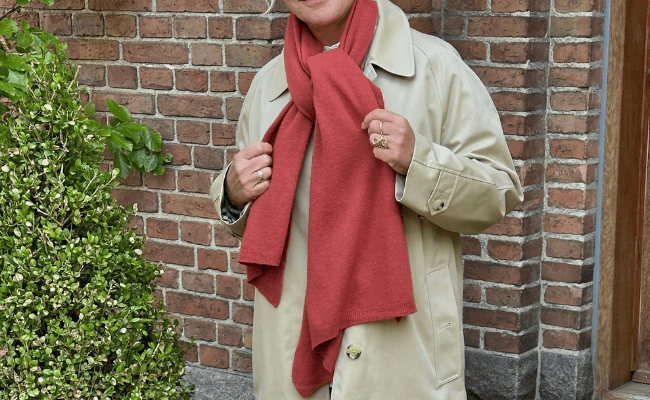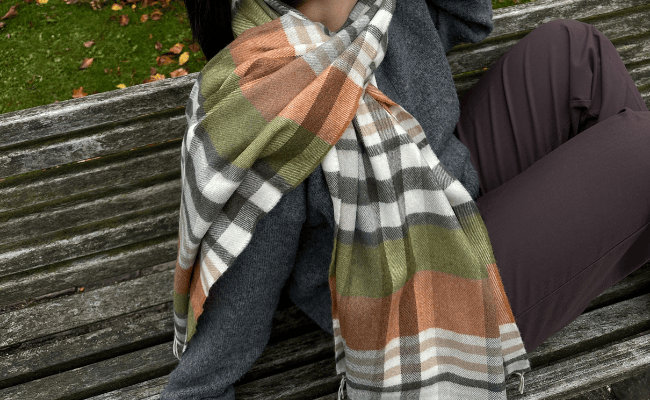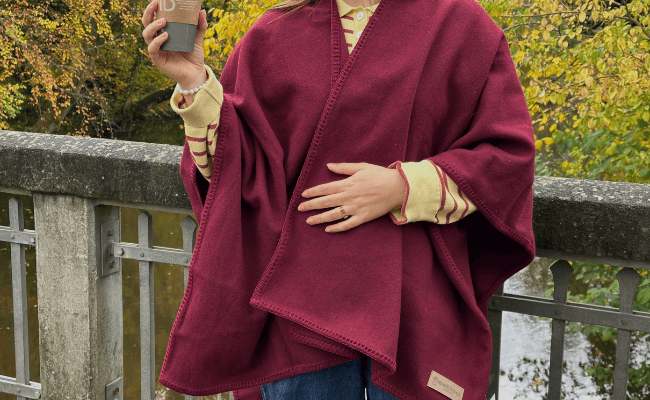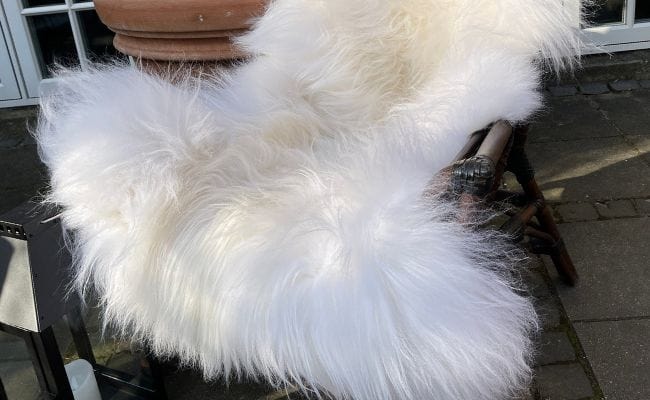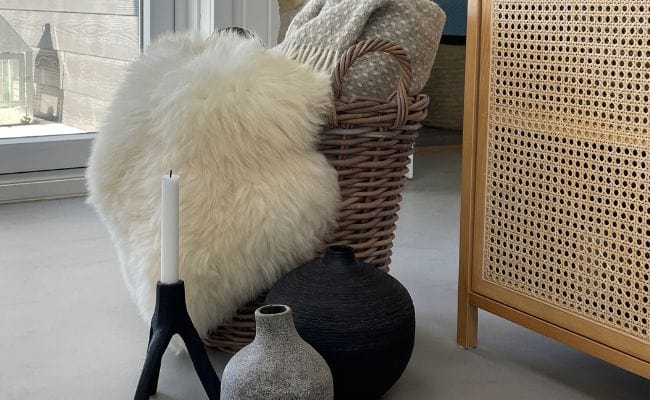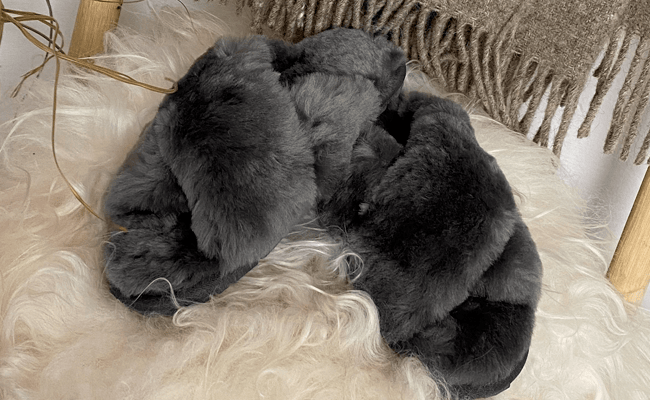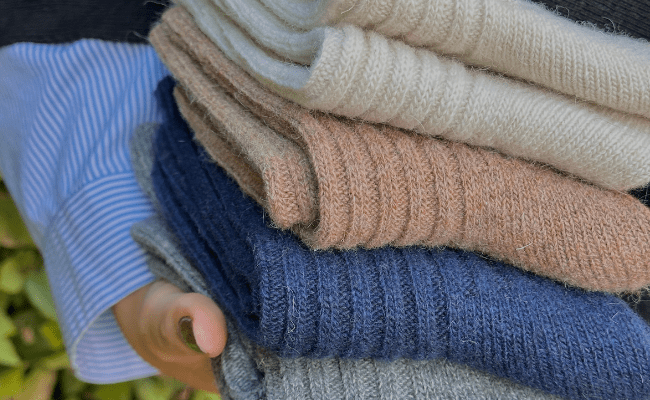Care and maintenance
- Made of wool plaids, acrylic plaids and lambskin
On this page you will find more information about the different types of wool that we use in our wool plaids. You will learn where our wool comes from, what properties each one has, and how to care for, maintain and wash them.
Here you will find information about the following products:
- Wool plaids
- Cotton plaids
- Acrylic plaids
- Lambskin
- Certifications
Wool blankets
Wool is not just wool. Wool comes in a variety of different types and qualities. With 100% wool, you get a material that is delicious and soft in several ways, and that can be used for many years to come. Wool has a fantastic and unique ability to help the body regulate temperature so that you don't overheat. Wool transports moisture away from the body, doesn't smell and dries quickly. With a wool plaid blanket made of 100% wool, you get a plaid that is rich in many properties. All of our wool plaids have a suitable thickness, so they will always feel soft and comfortable.
Melange
Definition: Melange yarn can be defined as "yarn made by combining at least two or more fibers". Conventionally, the term melange is used for yarn made by combining two fibers ( whether of the same type but different in color or the type of fiber used is different).
Cashmere
Cashmere is one of the most sought-after, luxurious and exclusive raw materials that nature gives us. The wool is made from the hair of the cashmere goat, and there is no wool like it. It is light, delicious, cooling, silky soft and warming at the same time. All cashmere comes from the area around Tibet and Mongolia. The goats in these areas live under extreme weather conditions, where the weather can fluctuate from minus 50 degrees in the winter months to plus 40 degrees in the summer months. As a result, the cashmere goat has developed a coat that can regulate its own heat according to what it needs. This is crucial for the wool, and thus makes cashmere wool of such exquisite quality as it is, and thus also in demand.
Cashmere wool comes from the undercoat of the cashmere goat and makes up a quarter of the goat's total fur. The cashmere wool is not shaved, but combed out by hand, which gives it its fine quality. Each goat produces 100-200 g of cashmere wool each year. Therefore, the small quantity and the high quality make cashmere wool a valuable quality. Cashmere has the advantage that wool types are finer, stronger, lighter and softer and about three times more insulating than sheep's wool, however, it does not have the same durability.
If you take care of this type of wool, it will create both joy and bring luxury into your home for many years to come. It is easy to maintain, as it is self-cleaning. The wool can be washed, but also hung outside and aired for a few hours. Then it is as good as new.
Merino wool
Merino sheep originate from Spain, however around 80% of all merino wool comes from Australia and New Zealand today. Merino wool is known worldwide for being one of the most exclusive types of wool, and it comes from the merino sheep. Wool from merino sheep is softer and warmer than wool from other sheep and is the finest type of sheep wool. It is very thin, but of a very fine wool quality.
Due to its high breathability, merino wool regulates temperature and, like regular wool, has good insulating properties, so you will never freeze under a wool blanket made from this type of wool. The wool type is less itchy than other types of wool, so if you have problems with other types of wool, then this type of wool is perfect for you, this is because the merino fibers are longer than regular pure wool.
Merino wool is usually more expensive than regular pure wool. This is because merino wool contains less lanolin than regular wool, as more time is spent washing the lanolin out of the wool. Lanolin is a wax/wool fat secreted by the sebaceous glands of wool-bearing animals.
Alpaca wool
Alpaca wool comes from the Alpaca, which lives in the harsh climate of the Andes. The wool is known for its softness, warmth and strength compared to wool from merino sheep, which is due to the alpaca's thick coat. If you compare aplaca wool to sheep wool, alpaca wool is 3-5 times warmer, finer and has a low fat content. The wool is hypoallergenic and has good breathability, which makes it suitable for people who are sensitive or have allergies to other types of wool. This type of wool itches less than other types of wool, so if you are the type who does not like it to be scratched, then Alpaca wool is perfect for you.
In addition to alpaca wool, there is also baby alpaca wool, which is the first fibers shaved from a full-grown alpaca. Baby alpaca wool is therefore the finest and highest quality of alpaca wool.
Alpaca wool is very durable and hard-wearing, which keeps dirt away as it is difficult to absorb. Therefore, alpaca wool requires less care and cleaning.
Lambswool
Lambswool, also known as lambswool, is obtained by shearing a sheep in its first year of life. By shearing the wool in its first year of life rather than from a fully grown sheep, the lambswool is particularly fine, smooth and soft. The fibers in lambswool are typically finer compared to wool from older sheep, which contributes to its soft texture.
Lambswool is dirt-repellent and self-cleaning, in addition it can cool and warm and it is breathable and temperature-regulating. Since each lamb can only be sheared once as the first shearing, lambswool is more exclusive and expensive than regular sheep's wool. A wool plaid made of pure wool is a durable, quality product that has good insulating properties and at the same time has a certain breathability. Lambswool can come in different colors depending on the breed and breeding of the sheep.
Lambswool contains lanolin, which is the wool's natural fat that keeps the wool clean. However, most of the lanolin is washed out of the wool before it is spun.
Nylon and polyester
Nylon and polyester are synthetic and durable materials that are very similar to each other. Nylon is often used as a reinforcement for other materials, while polyester can stand alone as a fabric, and can be made plush, look like silk, be woven thickly to resemble wool, and much more.
How to wash a wool plaid
If the blanket sheds or smells:
You can put your blanket in the freezer, for example overnight in a freezer bag, to remove odors and unwanted bacteria. This way you postpone the hard machine wash. When you freeze the blanket, you also freeze the short fibers in the blanket, and this can cause it to either shed less or stop shedding altogether. You can also repeat the maneuver if it starts shedding again after a while.
It is rarely necessary to wash the blanket. You can simply air it outside for a few hours and it will be as good as new. Should the unfortunate event occur and you are forced to wash your blanket. Then you should wash your blanket depending on the materials it is made of. Blankets made of 100% cotton can be washed on a regular 30 degree program, whereas if your blanket is made of wool, it should either be dry cleaned or washed on a gentle program intended for wool.
To always be on the safe side, so that you can have your plaid for many years, we recommend that you ALWAYS wash your plaid on a gentle cycle.
Cotton plaids
Cotton
Cotton is a natural fiber and comes from the cotton plant. It is made by spinning the fibers from the plant into yarn or thread. The wool that comes out of it is soft and stretchy, and it is comfortable to have around you and close to the skin. Cotton has many properties such as being breathable and good at transporting moisture away from the body. It has good insulating properties and, as an added bonus, is also hypoallergenic.
Acrylic plaids
Acrylic
Acrylic yarn is a man-made yarn, and is therefore often cheaper than yarn made from natural fibers such as cotton or wool. Acrylic yarn comes in many different designs and degrees of softness.
It is synthetic and dyed, and is therefore available in a multitude of delicious and beautiful colors. It is a much lighter yarn than others, and you get more yarn for the money. It retains heat well, making it perfect for all seasons.
How to wash cotton and acrylic blankets
It is rarely necessary to wash the blanket if it smells. You can simply air it outside for a few hours and it will be as good as new. Should the unfortunate event occur and you are forced to wash your blanket. Then you should wash your blanket depending on the materials it is made of. Blankets made of 100% cotton can be washed on a regular 30 degree program, whereas if your blanket is made of wool, it should either be dry cleaned or washed on a gentle program intended for wool. In addition, we recommend that it not be ironed or tumble dried.
To always be on the safe side, so that you can have your plaid for many years, we recommend that you ALWAYS wash your plaid on a gentle cycle.
GSM is an abbreviation for "Grams per Square Meter". Sometimes it is referred to as gsm, or g/m2. It is a term for the weight of fabric. A GSM of 200 simply means that one square meter of the woven plaid weighs 200 grams.
Lambskin
Our collection of beautiful genuine lambskin comes from Iceland and Europe. The lambskin is soft and of high and delicious quality. All lambskin is a by-product of meat production, and therefore no animals are killed solely for their skin.
It is very easy to maintain lambskin. If you care for it occasionally, you will ensure that the leather will last for many years.
How to maintain and care for lambskin
Lambskin is a natural product and is very easy to care for. It contains a natural amount of lanolin (a type of wool fat) which cleans and softens the skin. To ensure that you have your leather for a long time, we have some recommendations for you below.
We recommend that you gently air or vacuum/brush your lambskin regularly to ensure long-lasting durability. To restore the fluffy appearance, the skin should be brushed.
NOTE: Please note that dyed leather will fade if exposed to too much direct daylight/sunlight.
Lambskin cannot be washed in the washing machine. If it is absolutely necessary, leave it to professionals at a dry cleaner. Or try to remove the stain with a damp cloth.
Certifications
OEKO-Tex
![]()
![]()
Oeko-Tex is an international organization that provides certifications for textiles and textile products. These products meet high standards for sustainability and health safety. This certification ensures that the products are free from harmful chemicals and other substances that can potentially be harmful to human health. The Oeko-Tex certification is worldwide and is recognized in the textile industry as a sign of sustainability and healthy textiles. All our blankets from Ukraine are certified with this mark.
Oeko-Tex standard 100 class II (for products intended for adults), no. SEE 16-198.
https://www.oeko-tex.com/en/label-check
Woolmark
![]()
![]()
Woolmark is a certification for the use of wool in the textile industry. Woolmark certification is a quality seal that shows that a product is made from high-quality wool and has been thoroughly tested to ensure its presentation. This certification is worldwide and recognized in the fashion and textile industry.


